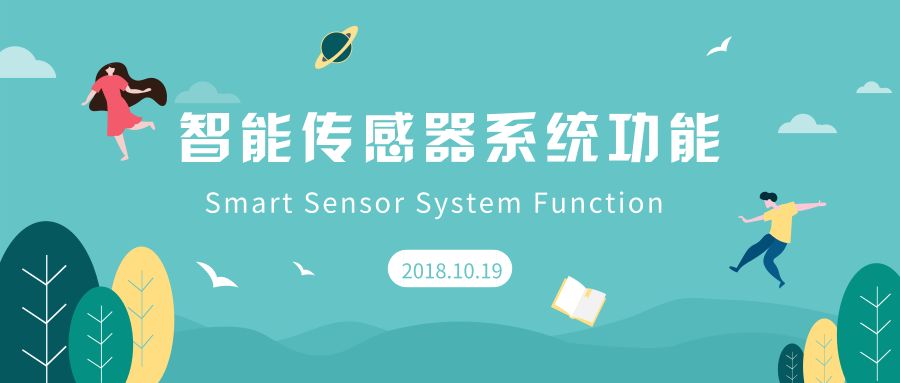智能传感器系统功能

(注:本文是译文,original author: Gary W. Hunter)
Low Powered Sensor Elements
低功率传感器元件
it possible to build very small and low power sensors. One example of microfabricated sensors that could be integrated into a smart sensor system is a sensor based on a microhotplate. Microfabricated hotplates offer a lower power platform for high temperature metal oxide conductometric sensors.
它可以建造非常小的和低功率的传感器。可以集成到智能传感器系统中的微型传感器的一个例子是基于微热板的传感器。微型热板为高温金属氧化物电导传感器提供了较低的功率平台。
In principle, this would allow the operation of this sensor for months to years using a single small battery.2 The microfabrication processing is compatible with CMOS processes and therefore makes integration of the electronic interface for the sensor feasible on a single substrate.
原则上,这将允许传感器使用单个小电池长达数月之久。2微细加工处理与CMOS工艺兼容,因此使传感器的电子接口集成在单个衬底上是可行的。
Many sensors will require multichip solutions, however, in order to achieve optimal sensing and processing. While approaches may vary for other sensor types, sensor elements that provide data with minimal power consumption can enable long lived smart sensor systems.
许多传感器将需要多芯片解决方案,以实现最佳的传感和处理。虽然对其他传感器类型的方法可能有所不同,但是提供数据以最小功耗的传感器元件可以启用长寿命的智能传感器系统。
Power: Battery or Energy Harvesting
动力:电池或能量收集
A smart sensor system will require energy to support and operate all components including the sensors themselves. If the sensor elements and communication system both have low power designs and are compatible, the total energy for the system is correspondingly low. This can enable lower installation costs and more convenient deployment options. Small scale energy systems for the smart sensor applications will generally consider batteries and energy harvesting options, whatever is most suitable for the specific applications. Both primary and rechargeable (or secondary) batteries will be important for our further advancement of the smart sensor system. Specifically, it is suggested that the Li-ion, Li-polymer, and metal-air rechargeable batteries can be appropriate energy sources for smart sensor systems.
智能传感器系统将需要能量来支持和操作包括传感器本身在内的所有组件。如果传感器元件和通信系统都具有低功率设计并且兼容,则系统的总能量相应地低。这可以降低安装成本和更方便的部署。用于智能传感器应用的小规模能量系统通常考虑电池和能量收集,无论哪种最适合于特定应用。初级和可再充电(或二次)电池对于我们的智能传感器系统的进一步发展都是重要的。锂离子、锂聚合物和金属空气可充电电池可以是智能传感器系统的合适的能源。
Energy harvesting is a process by which energy can be derived from an external source, captured, and stored. Piezoelectric crystals or fibers, thermoelectric generators, solar cells, electrostatic, and magnetic energy capture devices can be considered5 for local power needs. A piezoelectric energy system will produce a small voltage when it is physically deformed. This deformation can be caused by mechanical vibration that may be generated by the proper mounting and the placement of the smart sensor system in an appropriate (e.g., mechanically vibrating) operating environment.
能量收集是能量从外部源获得、捕获和存储的过程。压电晶体或光纤、热电发电机、太阳能电池、静电和磁能俘获装置可以考虑用于本地电力需求。压电能量系统在物理变形时会产生一个小电压。这种变形可以由机械振动引起,该机械振动可以通过在适当的机械振动环境中安装适当的智能传感器系统而产生。
6个热电发电机由两个不同材料的接合部组成。在热梯度的存在下产生一个小电压。100-200紫外/°C每个结的典型性能是可以实现的。根据智能传感器的位置及其功率要求,小能量收集系统可以从其周围获得足够的能量,以提供智能传感器应用的总功率或后备功率。这是两个例子,小能量源可用于支持智能传感器系统。
Wireless Communication
无线通信
The smart sensor system will require an electrical interface that will transmit the sensor outputs to an external data collection, recording or acquisition system. Ideally, this interface does not require wiring and can be accomplished by wireless telemetric methods. A practical telemetry system that can be integrated with the smart sensor must be relatively small and have all the required performance functions. The advancement of micro-electronic design and fabrication processing, namely the MEMS technology, provides a technical approach for wireless communication system development.
智能传感器系统将需要一个电接口,该接口将传感器输出发送到外部数据采集、记录或采集系统。理想情况下,该接口不需要布线,并且可以通过无线遥测方法来实现。可以与智能传感器集成的实际遥测系统必须相对较小并且具有所有所需的性能功能。微电子设计和制造工艺的进步,即MEMS技术,为无线通信系统的发展提供了一种技术途径。
In the digital world, sensor inputs can be processed to reduce noise, integrated with other sensory inputs for compensation, redundancy, and reliability improvements, and then interfaced to output requirements that range from simple digital displays of sensor outputs to wirelessly transmitted and stored data that feed-back to sensors or feed-forward to appropriate system controls.
在数字世界中,传感器输入可以被处理以减少噪声,用于补偿与其他感官输入集成、冗余和可靠性改进,然后连接到从传感器输出的简单数字显示到无线传输的输出要求。将数据反馈给传感器或前馈到适当的系统控制。
Future Applications
未来应用
Smart sensor systems potentially represent a new generation of sensing capability, and self-awareness that are essential components of future intelligent systems. Driving intelligence down to the component level through the design of smart sensor systems can and will have a profound impact on applications such as food safety and biological hazard detection; safety hazard detection and warning; environmental monitoring both locally and on a global scale; health monitoring and medical diagnostics; and industrial and aerospace applications. Smart sensor systems can enable intelligent systems, which can monitor themselves and respond to changing conditions optimizing safety and performance. The integration of sensors12 and algorithms can be used for early warning fire detection13 or any number of sensor-based applications.14 The smart sensor system approach can achieve distributed sensor systems feeding information from multiple locations to improve the overall understanding of system conditions. This new generation of sensors will possess embedded intelligence to provide the end user with critical data in a more rapid, reliable, robust, economical and efficient manner with a seamless interface to applications.
智能传感器系统潜在地代表了新一代的感知能力和自我意识,这是未来智能系统的重要组成部分。通过智能传感器系统的设计将智能降低到组件级,将对食品安全和生物危害检测等应用产生深远影响;安全危害检测和警告;本地和全球范围内的环境监测和医疗诊断;工业和航空航天应用。智能传感器系统可以使智能系统能够监控自身并响应不断变化的条件,优化安全性和性能。SysReS12和算法的集成可用于预警火灾探测或基于传感器的应用。智能传感器系统方法可以实现分布式传感器系统从多个位置馈送信息,以提高系统的整体条件理解。这种新一代传感器将拥有嵌入式智能,为终端用户提供更快速、可靠、健壮、经济和高效的关键数据,并具有与应用程序无缝的接口。